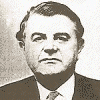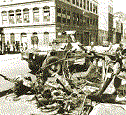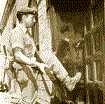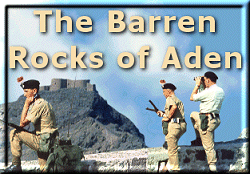Urban Terrorism

The violence in Aden started on the morning December the 10th 1963. The British High commissioner of Aden , Sir Kennedy Trevaskis arrived at Khormakar airport to catch a London bound aircraft. a grenade was thrown at him killing a woman and wounding 50 others including the High commissioner's assistant. The High commissioner was not injured but by the end of that day a state of emergency was declared in Aden. The NLF started to stir up the tribesmen in the Radfan hills to attack British troops on the Dhala road. The royal marines, paras and other British Army units carried out a campaign in the Radfan to quell this uprising. This campaign was a success and will be covered in another chapter of the web site.

After failing in the Radfan the NLF now switched it's tactics to urban terrorism in Aden itself. The NLF took to their new campaign with a new energy. One of their first attacks was a grenade thrown into the middle of a children's party at RAF Khormakar. When the grenade exploded it killed one girl and injured four other children. The NLF had discovered the grenade was the best way to get their point across. Usually by murdering British officers and policemen when they were off duty.

By 1967 the violence had reach Aden itself, mainly in Crater which was the old Arab quarter. To stop weapons being smuggled in to Crater by NLF and FLOSY the British security forces set up the : Scruber Line " just outside the town on the Dhala road. It was called the Scruber Line after the officer who designed and constructed it, Major " Scruber " Stewart-Richardson of the Coldstream Guards. It did little to stop the supplies of grenades reaching the terrorists in Crater.

Between the 19th and 20th of January the NLF went on the streets causing riots. When the Aden police lost control of the situation Sir Richard Turnbull who was the British High Commissioner in Aden at the time ordered the deployment of British Battalions to stop the riots. The British troops quickly squashed the riots and the NLF retreated but as soon as they were gone the FLOSY rioters took to the streets and fighting started again. And so it went on until mid February. By that time British troops had opened fire 40 times and there had been over 60 shooting and grenade attacks on British forces by NLF and FLOSY including the bombing of an Aden airlines DC3 which was blown up in mid air. There were no survivors.

Although the terrorists were starting to take a steady toll on the British forces the Arabs own death toll was much larger due mainly to the fact the the NLF and FLOSY were killing each other. Thirty Five leading members of FLOSY were murdered alone in February. In June of 1967 THE NLF took the bold decision the make part of Crater a so called "NO GO AREA". The 1st Battalion Parachute Reg. were sent in to this "NO GO AREA " . The paras had been sorely baited in recent weeks and were in no mood to be told where and when they could go and were spoiling to take on the NLF. By the end of the day, six terrorist lay dead and five taken prisoner.



